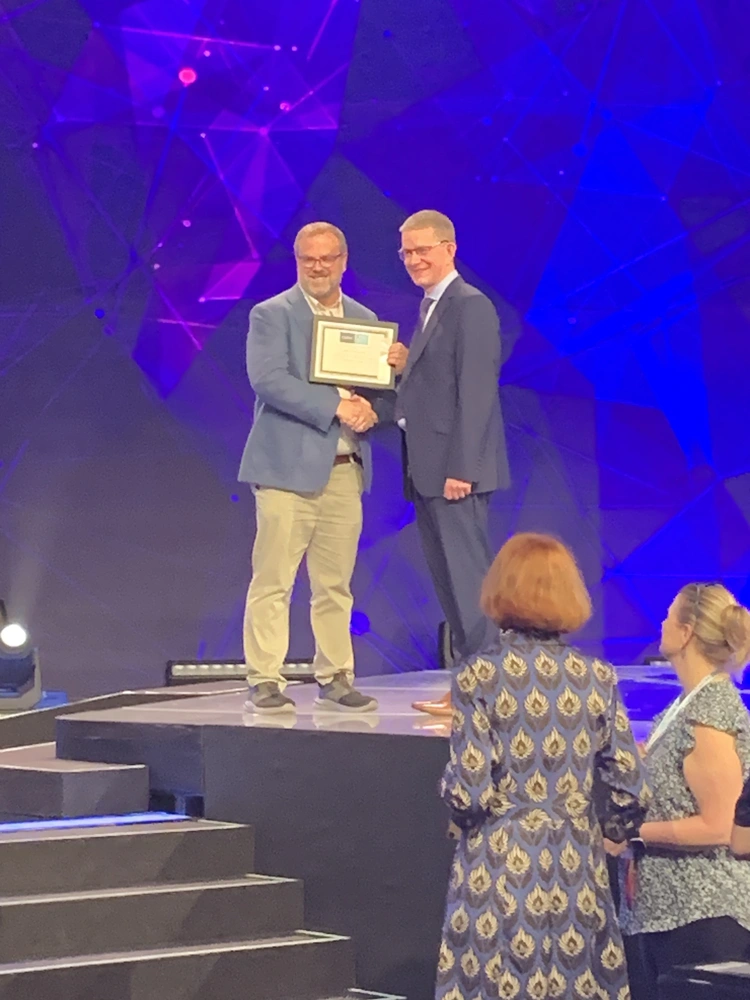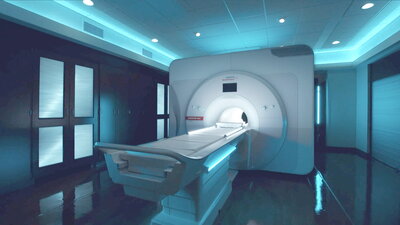
Brad Sutton, the technical director of the Beckman Institute for Advanced Science and Technology’s Biomedical Imaging Center and a professor of bioengineering at the University of Illinois Urbana-Champaign, was named a fellow of the International Society for Magnetic Resonance in Medicine on May 6. This list recognizes those who have made significant contributions to research or education in magnetic resonance in biology and medicine.
Sutton was recognized for his work developing algorithms to reconstruct brain images using MRI data, a process he likens to cracking a code. MRIs use magnetic fields to image soft tissues inside the body, but the complicated data they initially output must be processed before it is usable by researchers and clinicians.
Depending on the image being constructed, this can take days or longer.
“We put a brain in the scanner, and we get this really complex data out that doesn’t look like a brain, and we have to figure out what was in the scanner that led us to record this information,” Sutton said. “What I have done is develop algorithms to leverage some of the information that we know in advance.”
This previously known information includes knowledge of the brain’s shape and the types of signal intensity variations that come from different regions. For instance, by accounting for the fact that certain signal variations will never come from certain parts of the brain, the computer reduces the total number of possible images which could be constructed from the data. This improves the efficiency of the measurement and reconstruction process.
While these algorithms focus on brain data, they are helpful for understanding how to reconstruct MRI images of other parts of the body, and additional tools are built on top of the algorithms that Sutton has developed.
Sutton has been part of the Beckman Institute’s Biomedical Imaging Center since 2003.
“My entire career has been developed in the Beckman Institute,” he said. “It has been a tremendous experience here, having the people and equipment to try out ideas and do the part of the job that is fantastically fun: trying to get interesting data, and finding out what’s in that data and how we can make a good image out of it.”

One example of this state-of-the-art equipment is the 7 Tesla MRI scanner, which the Biomedical Imaging Center co-runs with the Carle Illinois Advanced Imaging Center. This scanner, one of the first 10 to be approved for use by the FDA and the only such scanner in the state, has a much stronger magnetic field than the 3 Tesla MRI scanners typically used for medical imaging. This allows for more detailed images and the ability to get different types of information.
Access to the next generation of MRI technology enables researchers to develop methods for working with it, helping it to be used to its full potential for other research and in clinical settings.
Sutton describes his work, and much of the work done in the Biomedical Imaging Center, as constantly building on previous research conducted by Beckman researchers and members of the ISMRM.
Sutton has attended the ISMRM’s annual meeting for more than 20 years. The meeting includes the presentation of new additions to the list of fellows, including former Illinois researcher Paul Lauterbur, who received the Nobel Prize in 2003 for inventing the MRI; and current Illinois and Beckman researcher Zhi-Pei Liang, a professor of electrical and computer engineering working on MRI imaging methods and processing algorithms.
“You look up to this list of people, and these are the people I know have affected my own learning, my own trajectory, my own path,” Sutton said. “Individuals on these lists have helped me out directly, not just providing really good science ideas but people who have been like a family member over the years. Hopefully I can serve the same purpose for people who come after me.”